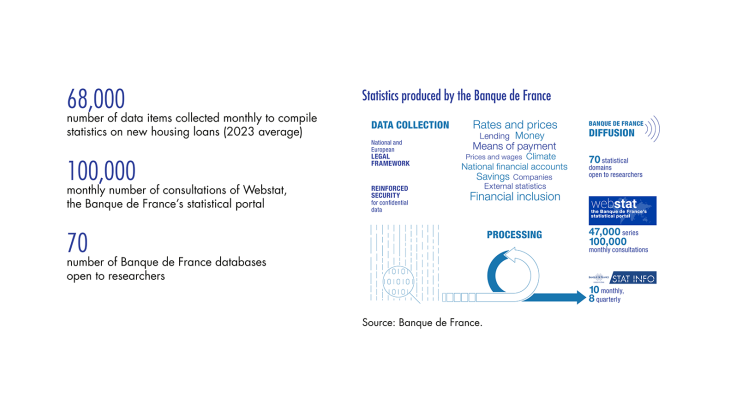Banque de France Bulletin
Three good reasons for central banks to (also) produce statistics
Published on the 21st of March 2024
Bulletin No. 250, article 4. The Banque de France and the banks of the European System of Central Banks are major players in the production of official statistics, in cooperation with national institutes. The economic and, above all, financial data they produce, benefit from their independence and a reliable, transparent methodology. In addition to these specific features, they offer three other advantages:
- central banks are able to cross check the aggregate indicators they produce with the individual data to which they have access (in particular those of banks, non financial corporations, customs), and thus ensure overall consistency;
- they have embraced digital and associated technologies, and are disseminating new indicators, notably on the climate. They have also been able to analyse in real time the economic consequences of the health crisis and the invasion of Ukraine;
- they put their statistics within everyone’s reach, striving to make them accessible to all audiences.
